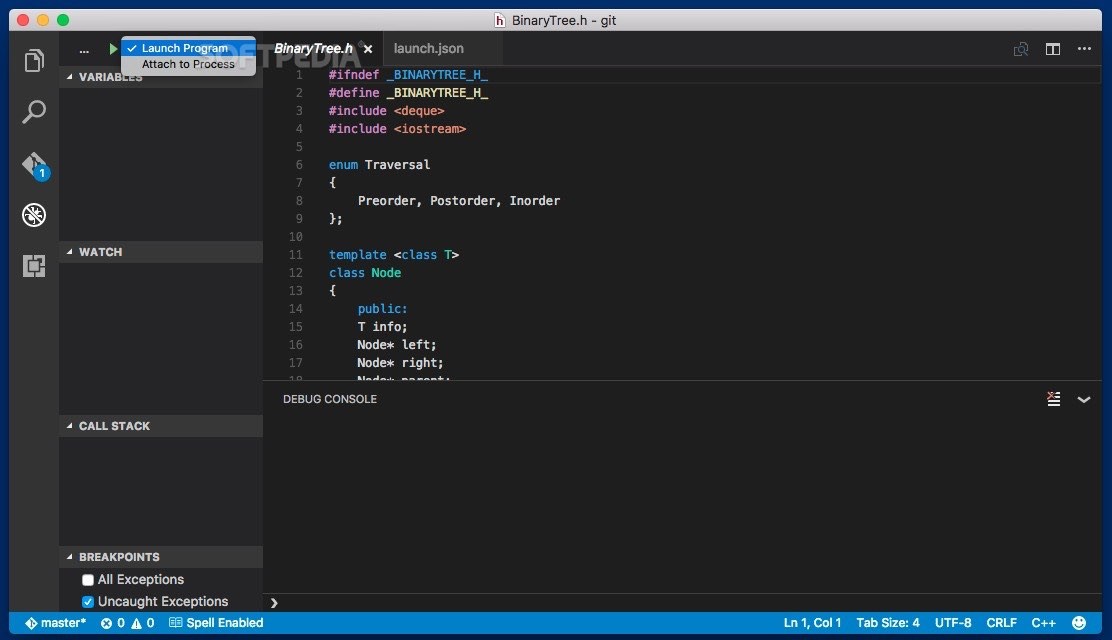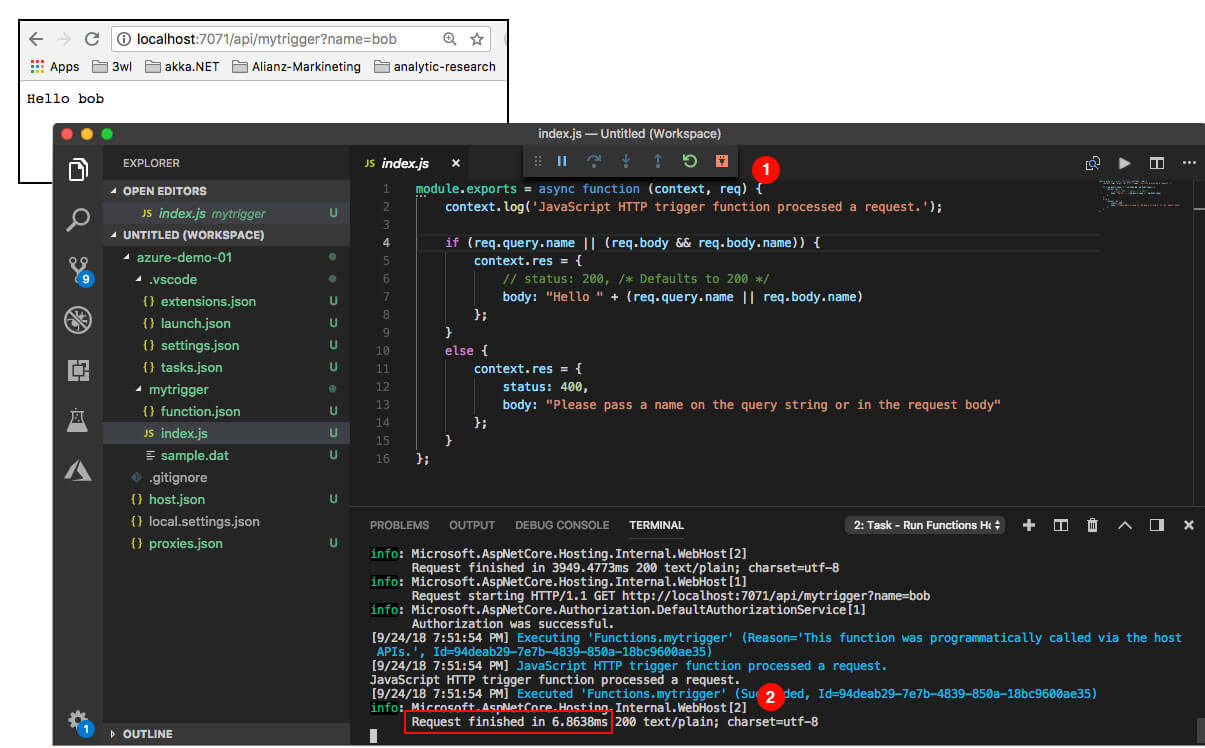
- VISUAL STUDIO CODE DEBUG SERVERLESS HOW TO
- VISUAL STUDIO CODE DEBUG SERVERLESS INSTALL
- VISUAL STUDIO CODE DEBUG SERVERLESS SERIES
- VISUAL STUDIO CODE DEBUG SERVERLESS WINDOWS
In my case I’m trying to develop a serverless plugin, so I have a plugin_dir directory with a simple serverless.yml file and my plugin’s index.js in it. I found that setting “console”: “integratedTerminal” in the launch.json entry for the debug session fixed the issue - vscode switches to the terminal instead of the debug output, but it still runs under the debugger. Use the debugger buttons to step through the breakpoints. Select Attach to SAM Local from the configurations select box. It would run, and I could set breakpoints and it would hit them, but nothing would print. To begin debugging, set some breakpoints and perform the following steps: In a terminal run sam local invoke -e examples/findCharactersByTag.json -d 9229. Running serverless in the vscode debugger wouldn’t produce any output in the debugger output window. I was eventually able to figure it out on my own.

gitignore file, as this symbolic link is specific to only your machine.I realize this is kind of old, but I ran into the same problem last night.
VISUAL STUDIO CODE DEBUG SERVERLESS HOW TO
Youll explore the debugging launch configuration that is generated for you in your Azure Function application and learn how to launch it with the keyboard or cursor.
VISUAL STUDIO CODE DEBUG SERVERLESS SERIES
IMPORTANT: This option requires a restart of VS Code to take effect. Beginners Series to: Serverless Learn to debug your Azure Functions application using Visual Studio Code and its debugger. Then, to silence all telemetry events from the VS Code shell and disable telemetry reporting, add the following option. On macOS, select Code > Preferences > Settings.
VISUAL STUDIO CODE DEBUG SERVERLESS WINDOWS
This allows debugging your site and serverless functions all in the same. On Windows or Linux, select File > Preferences > Settings. So I use it to ask for the path of node with the version we want, and then create a symbol link (with executable flag enabled) within the root of the project pointing to that specific node executable. This guide will walk you through configuring VScode to run and debug netlify dev. So what does this task do? By default, nvm installs files in your home directory, including the nvm-exec tool which picks up. nvm-node"Īfterwards with the addition, my scripts section looks like: (Rest of package.json) … "scripts":, … Linux (thanks Francesco & Denys ): "nvm": "~/.nvm/nvm-exec which node | xargs -I % ln -sf %. You can use AWS SAM to debug and test applications on your local machine and it supports Microsoft Visual Studio Code debugging via the AWS Toolkit for VSCode. MacOS: "nvm": "~/.nvm/nvm-exec which node | xargs -J % ln -sf %. If you want to use the in-built debugging within VS Code with your Serverless Projects then this is the video for you.Link to the launch.json. npmrc file (see above for instructions), edit your project’s package.json file, and in the scripts section add a task for nvm: I tried a number of approaches, but the one that worked for me was a combination of npm and editing Code’s configuration files. But I couldn’t get it to use the correctly version of node by using nvm and.
VISUAL STUDIO CODE DEBUG SERVERLESS INSTALL
Open a command prompt at the project root directory and execute this command to install netlify-cli locally to your project. Code has amazing Node.js support, allowing the running and debugging of your node process, so has become my preferred editor. Step 1: To get started with the debugging, we need to install the netlify-cli command-line tool. It provides the tools developers will need for a code, build, and debug cycle, leaving more complex workflows to more fully. It supports development operations such as task running, debugging, and version control.

However, there’s an issue with Microsoft’s fantastic Code editor. Microsofts Visual Studio Code is a free, open source code editor that runs on all operating systems (macOS, Linux, and Windows). If this is a new version to your machine, then also install that version using “nvm install 7”. You'll explore the debugging launch configuration that is generated for you in your Azure Function application and learn how to launch it with the keyboard or cursor. nvmrc file to the project, containing in plain text the version of node you wish – use “7” for the latest version of Node.js, which brings most ES6 features (removing the need for transpiling with babel 🎉). Beginner's Series to: Serverless Learn to debug your Azure Functions application using Visual Studio Code and its debugger. So myself, I just create the file and stick “4” or “7” in it depending on the project, and all my node … and npm … shell commands will use that specified version. nvmrc files within a project, nvm can automatically pick up which Node.js version you need. (I use the fish shell, so had to install some extras to get it working with that)

I could now switch between version 4 and 7 at will. So, I installed NVM, the Node Version Manager, and it worked a treat. I recently have worked on projects, some using Node.js 7, and others requiring the older version of 4.

Getting Visual Studio Code and NVM Working Together


 0 kommentar(er)
0 kommentar(er)
